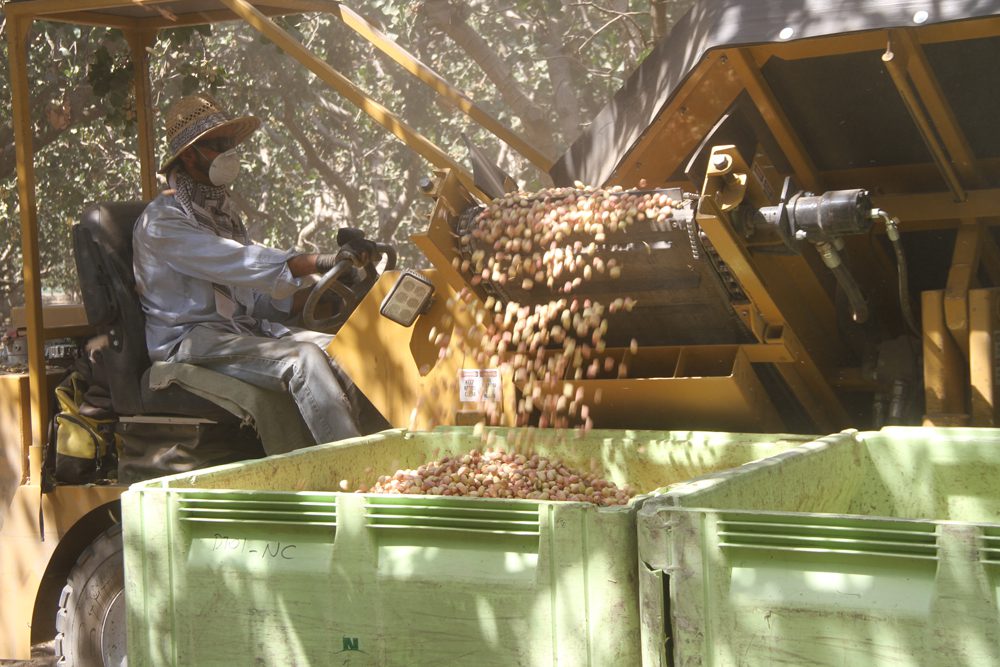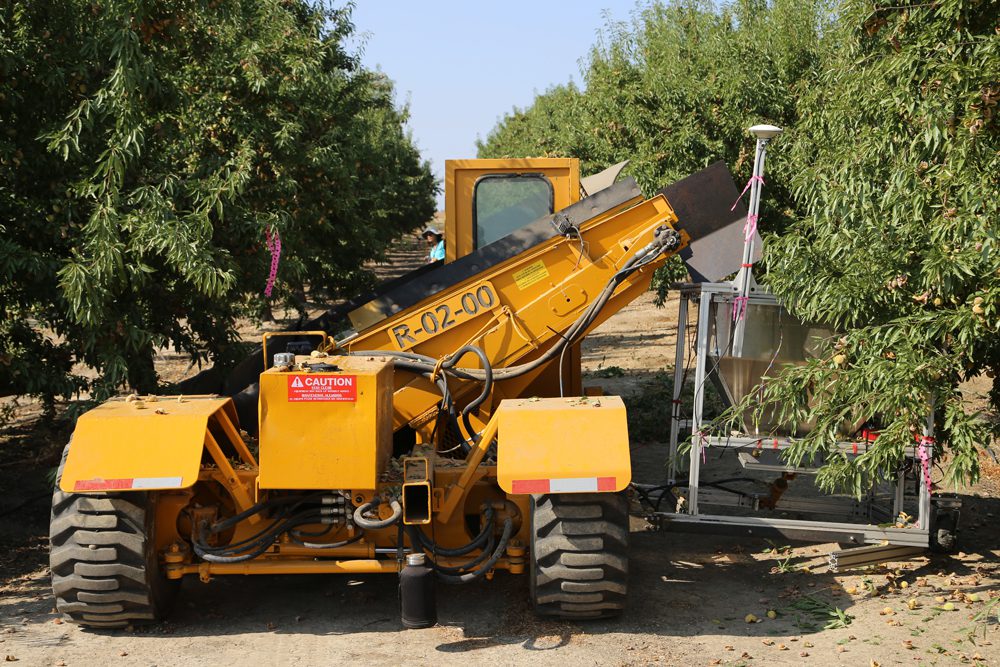
Growers are under constant pressure to properly and efficiently utilize their nitrogen and water. One of the key determinants in an orchard for how much nitrogen/water to use and when to use it is yield, according to UC Davis Pomologist Patrick H. Brown. However, growers don’t know the actual yield until nuts are harvested.
A new UC Davis project is looking to change this for pistachio growers. Brown and UC Davis Professor Yufang Jin have begun working on a USDA grant proposal to develop a method to predict pistachio yield by using historic yield data, free satellite imagery, automated climate analysis and individual orchard characteristics. The outcome will be a simple-to-use app or website for yield prediction of any pistachio block, and this can be used to help predict ideal nitrogen fertilization and irrigation as well as plan other yield-dependent activities.
Brown provided some insight to the overarching goals of this project and how it can hopefully benefit the pistachio industry. “Early in the season (April, May), [we will] be able to get to growers a realistic estimate of their predicted yield for the remainder of the year so that they can then optimize that water and nitrogen to meet the goal of that particular yield.”
To make this project successful, Brown said that the researchers need as much individual block yield data from pistachio orchards across the state as possible. Important to note is that all data received will be fully anonymized and private. There is no cost to growers, no charge for final product and no need for UC experimentation on orchards. The orchard information survey can be found at https://myaglife.com/s7yb.
The researchers, Brown said, would use historic trend data from hundreds of different orchards across the state and ask computer programs to find patterns in the data. Those patterns would then be related to satellite images of the trees and the climate of a particular year.
“We would like from as many growers, from as many individual orchards as possible, historic yield data and, as much as they’re willing to do so, information on the orchard, such as planting distances, planting year, etc.,” Brown said.
Brown said the app or website would ideally be able to estimate a growers’ yield in an already-established location and even a location that doesn’t yet have plantings. Additionally, it would be able to tell growers or researchers why an orchard in one part of the state is getting historically higher yields than an orchard in a different part of the state.
Comparison to Almond Yield Project
A UC Davis team led by Stavros G. Vougioukas, professor in the Department of Biological and Agricultural Engineering, designed a weighing bin in 2021 to precisely measure the yield coming off of each tree in an almond orchard. As nuts are shaken from trees and collected in an off-ground harvester, they move along a conveyor belt and are captured in the weighing bin. The bin then communicates to the driver when to drop the nuts in the windrow.

The pistachio project, according to Vougioukas and Brown, would draw many similarities to the almond project. One goal for the pistachio project, Vougioukas said, is to be more robust when it comes to localization in the orchard. In other words, the researchers want to be able to more accurately pinpoint which trees are yielding what amount using GPS software that will connect to the website/app.
“In the [almond] orchards we operated, the GPS signals were very reliable. The accuracy was a few centimeters,” Vougioukas said. “But in other orchards, especially with tall trees, you may have issues with the GPS; it might come and go, or it might not be as accurate.”
The researchers will work on overcoming this problem by pairing other orchard sensors with the GPS software in order to formulate a more accurate image of individual yield from taller trees like those of pistachios. The custom harvester bin, as in the almond project, will weigh the pistachio nuts and robustly associate the weight with an individual tree.
“That’s the ultimate goal. When you have the weight, is it tree number five, number six, number seven…” Vougioukas said.
Another direction the researchers are looking to go compared to the almond project, depending on available grant funding, is to move from a weighing bin design to a more ‘online’ weight measurement to significantly decrease any delays in the harvesting process, Vougioukas said.
“Ideally, you’d be measuring yield per tree or even per two or three trees without stopping,” he said.
This function would also be integrated with the website/app for growers to view in real time.
Precision Irrigation Management
UC Davis Associate Professor of Agrohydrology & Water Management Isaya Kisekka will be heading the irrigation side of the pistachio project. Ultimately, the pistachio yield prediction model and resulting data will be responsive to variations in water applied, and soil moisture and tree water status will be used as “covariates” for yield prediction, he said.
“The grower can use the model to predict the penalty in terms of yield reduction associated with missing irrigation or the marginal increase in yield from making a given irrigation event,” Kisekka said.
Kisekka will be developing methods for sensing soil and plant water statuses from individual trees to the entire orchard to support precision orchard water management. This, he said, will involve the fusion of sensors, remote sensing imagery and artificial intelligence.
Andrew McElrone, a research plant physiologist with USDA-ARS and adjunct faculty at UC Davis that is working on the almond project, noted that remote sensing makes it easier in general to survey the orchard and that the cost is coming down for these tools. “What the remote sensing can do is allow you to cover a lot more acreage more rapidly without having to send armies of people into the field to do intensive measurements.”

Taylor Chalstrom
Taylor is the new Digital Content Editor at JCS Marketing Inc., coming on to the team in June 2020 as an editorial intern. He previously attended Cal Poly, San Luis Obispo, earning a degree in Agricultural Science and a minor in Agricultural Communication. Taylor wrote for AgCircle, Cal Poly’s award-winning agriculture magazine produced by the Brock Center for Agricultural Communication, for two and a half years before becoming Brock’s Associate Editor for writing in his final year at Cal Poly.










